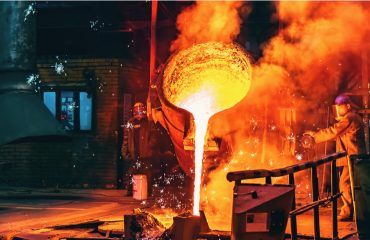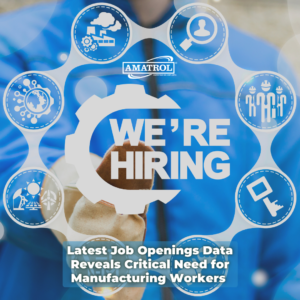
Click HERE to view Latest Job Openings Data Reveals Critical Need for Manufacturing Workers as a multimedia presentation.
Throughout most of 2020, manufacturers in every industry struggled with challenges, both old and new. Of course, the COVID-19 pandemic brought with it a whole host of difficulties, not the least of which was a major disruption to supply chains around the globe.
These new difficulties compounded existing problems, such as maintaining a highly-skilled workforce in the midst of labor market fluctuations and a shortage of skilled workers interested in manufacturing.
Halfway through 2021, it’s now clear that the economy is bouncing back as the pandemic wanes. Will this mean an influx of workers to ease the burdens manufacturers have been bearing for years now?
Unfortunately, if recent data is any indication, manufacturers will continue to struggle to hire the highly-skilled workers they need to increase production to meet surging demand. In this article, we’ll take a closer look at the recent data, what it means, and what it will take to build a pipeline of future skilled manufacturing talent.
Manufacturing Job Openings Hit Record High
 The COVID-19 pandemic has not been kind to manufacturers. According to an article by Andrew Deichler of the Society for Human Resource Management, “the COVID-19 pandemic undid over a decade of job gains in the manufacturing sector, wiping out more than 1.4 million positions.”
The COVID-19 pandemic has not been kind to manufacturers. According to an article by Andrew Deichler of the Society for Human Resource Management, “the COVID-19 pandemic undid over a decade of job gains in the manufacturing sector, wiping out more than 1.4 million positions.”
Although “[a]bout 820,000 of those jobs had been backfilled by the end of 2020,” hundreds of thousands of jobs remained unfilled and manufacturers have continued to experience problems filling those roles.
Currently, the United States finds itself in the midst of an unprecedented period of recovery from the pandemic. According to an article by Gwynn Guilford and Sarah Chaney Cambon in The Wall Street Journal, “[t]he U.S. economic recovery is unlike any in recent history, powered by consumers with trillions in extra savings, businesses eager to hire and enormous policy support.”
As good as that may sound, such a recovery is not without its problems. “The speed of the rebound is also triggering turmoil. The shortages of goods, raw materials and labor that typically emerge toward the end of an expansion are cropping up much sooner.”
The latest data from the U.S. Bureau of Labor Statistics’ Job Openings and Labor Turnover Summary (“June 2021 JOLTS Report”) shows that, as of April 30, 2021, there were 9.3 million job openings in the U.S., which represents the largest number of job openings in recorded history (data back to December 2000).
Of those 9.3 million job openings, 851,000 of them were in manufacturing. That’s a staggering number of open manufacturing jobs, representing an increase of 102,000 jobs over the previous month (749,000 in March 2021) and more than triple the number of job openings seen a year ago (279,000 in April 2020).
Why Are There So Many Job Openings in Manufacturing?
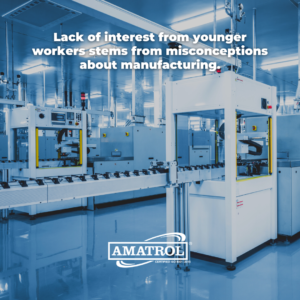 Although the number of current job openings in manufacturing is at a historic high, manufacturers have had trouble filling open positions for some time — both for “higher-paying entry-level positions and specialized roles that require skilled workers,” according to Deichler.
Although the number of current job openings in manufacturing is at a historic high, manufacturers have had trouble filling open positions for some time — both for “higher-paying entry-level positions and specialized roles that require skilled workers,” according to Deichler.
Research by Deloitte and The Manufacturing Institute has uncovered “multiple reasons why these positions are going unfilled.” For example, “many younger workers have different expectations for jobs and careers…[because they] prioritize work/life balance and don’t view manufacturing as a sector that allows for a lot of flexibility.”
These views have led to an overall “lack of interest in the industry.” Deichler notes:
“According to Carolyn Lee, executive director of [The Manufacturing Institute], the lack of interest from younger workers can largely be attributed to misconceptions about the manufacturing space. Many recent college graduates view manufacturing as an industry that’s earmarked for people who did not pursue post-secondary education. In actuality, there are many manufacturing jobs that require college degrees and some that require doctorates.”
Finally, the excessive number of job openings in manufacturing is also attributable, in part, to an aging workforce. “[M]any of these roles had previously been filled by members of the Baby Boomer generation who have retired.”
One Solution Highlights Another Problem: The Skills Gap
 One obvious solution that manufacturers are focusing on is changing the perception of manufacturing jobs. They believe if younger workers properly understood all manufacturing has to offer, there would be greater interest and a stronger pipeline of future talent.
One obvious solution that manufacturers are focusing on is changing the perception of manufacturing jobs. They believe if younger workers properly understood all manufacturing has to offer, there would be greater interest and a stronger pipeline of future talent.
But this task is easier said than done. Misperceptions that have taken years to form are not easily or quickly changed. A concerted effort on the part of many manufacturers is required to make progress toward this goal.
Carolyn Lee believes improved messaging about upward mobility in manufacturing and the opportunity to acquire and develop new skills is the key:
“We need to do a better job of talking about what those skilling and upskilling opportunities are. You’re not necessarily choosing the thing you want to do forever, but you’re choosing where you want to start. And I would be hard-pressed to find another sector that has as much upward mobility as we have in manufacturing.”
Unfortunately, this solution also highlights another problem: there simply are not enough people with the advanced skills most modern manufacturing facilities require. Unlike the common misperception held by many younger workers, today’s manufacturers are not dirty facilities filled with old machines.
Instead, they’re clean, advanced workplaces filled with robots and other cutting-edge smart automation technologies connected by networks that collect, analyze, and disseminate data using the Internet. The technological revolution that has overtaken manufacturing is known as Industry 4.0, and it has magnified a problem called the “skills gap.”
The “skills gap” describes the mismatch between the increasing demand for workers with advanced technical and technological skills and the shortage of these workers available to manufacturers. So, as manufacturers seek to change misperceptions about manufacturing as a whole, they must also support efforts to upskill current workers and ensure that future generations of workers are learning the skills they require.
Technical Training Is the Key to Building a Pipeline of Skilled Manufacturing Talent
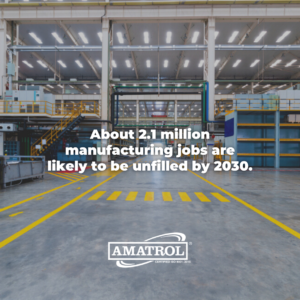 How can manufacturers help build a pipeline of skilled manufacturing talent while also getting the next generation of workers interested in manufacturing? Technical training may be the answer to both issues. And it’s needed sooner rather than later.
How can manufacturers help build a pipeline of skilled manufacturing talent while also getting the next generation of workers interested in manufacturing? Technical training may be the answer to both issues. And it’s needed sooner rather than later.
As Deichler notes in his article, “manufacturers…need to rethink their approach to hiring if they want to attract talent throughout the current decade and beyond. Staying the course could be devastating for both the manufacturing industry and the greater U.S. economy.”
“[A]ccording to a report…by Deloitte and the Manufacturing Institute (MI)…about 2.1 million manufacturing jobs are likely to be unfilled by 2030. The study warned that the shortage could damage the U.S. economy by up to $1 trillion.”
Fortunately, manufacturers and industry-focused advocacy groups are taking steps to tackle these critical issues. For example, National Association of Manufacturers (“NAM”) President and CEO Jay Timmons had this to say recently on Yahoo Finance Live:
“The manufacturing of my grandfather’s day is nothing like manufacturing of today. Today’s manufacturing is sleek. It’s technology-driven. It’s very, very exciting. When I’ve been able to speak to groups of students…to [get them to] understand what manufacturing is all about, they get really excited about being a part of that and about creating their own future.”
He went on to explain:
“Manufacturers are stepping up to provide training opportunities not only for those who are looking for work but also for those who have manufacturing jobs now. Because we want to be able to upskill our workers. Everything’s changing every day. Technology brings all kinds of new challenges and all kinds of new opportunities. So we are working to upscale our workers and future-proof the jobs that exist in manufacturing today here in America.”
He concluded his remarks by focusing on the opportunities modern manufacturing provides:
“[I]t’s so important that young people know that there are many options and opportunities, different pathways to success. Sometimes that involves a four-year institution. Sometimes it involves a two-year institution. Sometimes it involves simply a high school degree. So we want to make sure that young people understand there are so many options out there. There’s so many opportunities for great careers. And manufacturing should be right at the top of their list.”
Amatrol’s Technical Training Solutions Lead the Way
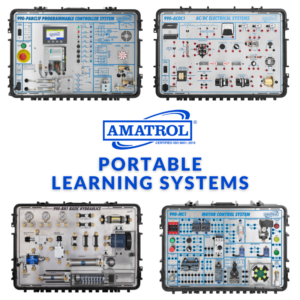 Whether you’re an educator responsible for training the next generation of highly-skilled manufacturing workers or an employer seeking to upskill current workers, Amatrol manufactures the technical training solutions you need to reach your goals.
Whether you’re an educator responsible for training the next generation of highly-skilled manufacturing workers or an employer seeking to upskill current workers, Amatrol manufactures the technical training solutions you need to reach your goals.
With more than 30 years of experience, Amatrol remains the world’s leader in providing technical training solutions that combine the best of instruction via interactive eLearning curriculum and hands-on skill building with real industrial equipment.
One key word that can be used to describe Amatrol’s unique approach is flexibility. Not only does Amatrol’s eLearning curriculum provide instructors and students alike with great flexibility with its 24/7 online availability, but many of its hands-on trainers come in portable versions that can be conveniently used in multiple locations.
For example, click on the links below to learn more about portable Amatrol training solutions for programmable logic controller (PLC) programming, basic electrical, basic hydraulics, and electric motor control troubleshooting:
- Portable PLC Troubleshooting Learning System – AB CompactLogix
- Portable AC/DC Electrical Learning System
- Portable Basic Hydraulics Learning System
- Portable Motor Control Troubleshooting Learning System
Ready to learn more about how Amatrol can help you take your technical training program to the next level? Contact Amatrol today to consult with a technical training expert who can listen to your needs and recommend solutions.
About Duane Bolin
Duane Bolin is a former curriculum developer and education specialist. He is currently a Marketing Content Developer for Amatrol, Inc. Learn more about Amatrol and its technical training solutions, including eLearning, here and connect with Duane on Amatrol’s Twitter, Facebook, LinkedIn, and YouTube pages.



